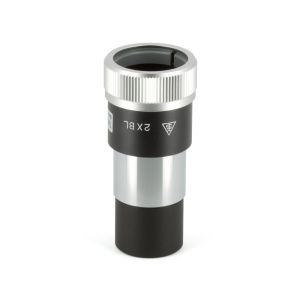
TAKAHASHI
With its new optical system, Takahashi brings the Epsilon-160ED into the era of digital imaging.
Available within 5-14 days

This includes products that we do not keep in stock but are only available on request or have been announced by the manufacturer. For orders of these items, a deposit is required, proportional to the total value of your order. As soon as we receive your order, we will notify you by e-mail or telephone, for the exact delivery time and the amount of the deposit.
EPSILON-160ED REFLECTOR OTA
In June 1984, Takahashi launched its first telescope dedicated to wide-field deep-sky photography, the Epsilon-160, with an innovative and demanding optical formula, both in terms of realization and adjustments for the photographer. The high-end Japanese manufacturer became one of the pioneers of this type of instrument in the amateur world. For the next 36 years, Takahashi offered to users of this emblematic telescope various optical correctors to adapt to changes in photographic equipment and techniques, without however offering a model specifically designed for digital imaging and its particular requirements. In fact, given the pressing need for a dedicated "digital" corrector, Takahashi preferred to update the entire instrument rather than just design a new corrector for the few Epsilon-160s still on the market.The Epsilon-160ED is the result of this evolution, which benefits from feedback on the other more recent models, Epsilon-180ED and Epsilon-130D, combining ease of use, portability and performance.
All Epsilon series catadiotric telescopes are hyperbolic primary mirror wide-field astrographs. A corrector is integrated in the rack-and-pinion focuser and provides a flat field on an image circle covering today's full-format digital sensors. The former corrector of the Espilon-160 was designed for analog photography; it was no longer suitable for today's CCD/CMOS sensors and DSLRs with increasingly smaller pixels. Therefore, all efforts were focused on designing a new field flattener, using the best ED lenses. By optimally correcting for aberrations, Takahashi obtained a diffraction-limited pinpoint stars of 3 microns RMS at the edge of the field, one tenth of that of the original Epsilon-160 and one fifth of that obtained with the best corrector available for this telescope. This is a true feat that gives the new model unrivalled performance. This field flattener is designed only for the Epsilon-160ED and cannot be adapted to other models; its design suits to the specific coefficients of the aspherical primary mirror of the Epsilon-160ED.
The optimisation of the design of the telescope has also made it possible to reduce the distortion by two thirds, whereas it was noticeable on the original model. It becomes imperceptible, only 0.3%, i.e. almost comparable to that of a Takahashi TOA refractor equipped with its field corrector (0.2%). Reducing distortion increases the accuracy of many applications: astrometric reduction, spherical astronomy or mosaics of pictures.
With its new optical system, Takahashi brings the Epsilon-160ED into the era of digital imaging.
In wide-field imaging with large sensors, it is critical to obtain homogeneous illumination of the image circle. With the low aperture ratio (F/3.3) of the Epsilon-160ED, if the secondary mirror were in the center of the optical tube, the light intensity at the image circle would be unbalanced. In addition, it would have to be oversized. Takahashi solved these problems by off-centering the secondary mirror to optimize the illumination of the image circle without increasing the central obstruction.
The primary mirror of the Epsilon-160ED is held in place by a support similar to that of the Epsilon-180ED. The back of the mirror is supported by 3 special screws. It is retained laterally and held at the front by a crown acting as a diaphragm. As on the Epsilon-130D, the mirror tilt is adjusted by three sets of three screws, two push screws located on either side of a pull screw. A removable cover speeds up the heating of the primary mirror. Finally, none of the screws protrude from the crown of the primary support so that the optical tube can be placed vertically without damage.
The oversized rack-and-pinion focusing system includes a CAA (Camera Angle Adjuster) for photographic framing. The precision and solidity are incredible; it is possible to attach the most demanding photographic setups to it. A microfocuser and motors are available as options.
| Net Weight (g) | 6900 |
|---|---|
| Optical design | Newtonian Reflector |
| Aperture (mm) | 160 |
| Focal length - F (mm) | 530 |
| Focal ratio (f/) | 3.3 |
| Mount | Not included |
| Maximum useful magnification (x) | 320 |
| Characteristic | Takahashi Epsilon-160ED reflector |
| Optical design | Modified hyperbolic Newtonian |
| Combination | Hyperbolic primary mirror + flat secondary mirror + field flattener |
| Length of the optical tube assembly | 580 nm |
| Diameter of the optical tube assembly | 204 nm |
| At prime focus | |
| Focal length | 530 mm |
| Focal ratio | F/3.3 |
| Image circle diameter | 44 mm |
| Metal back distance | 56.2 mm |
